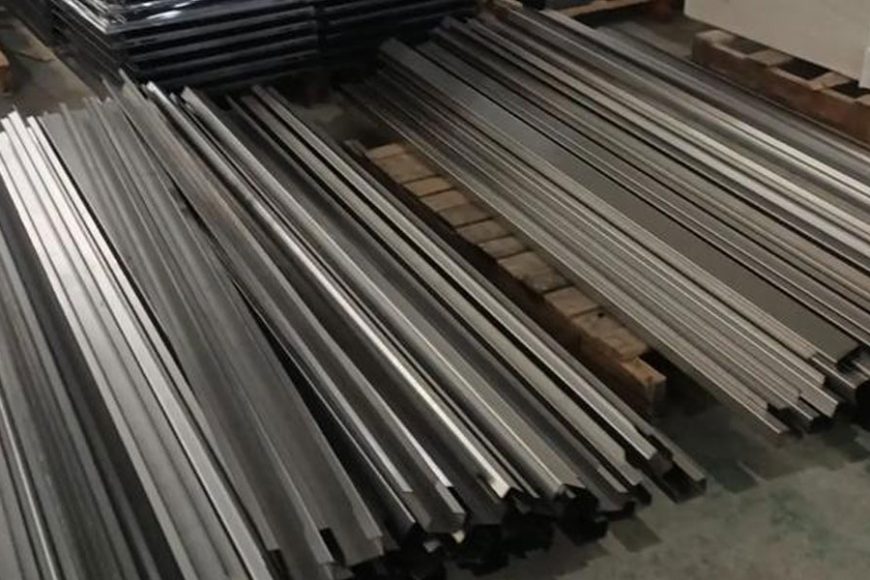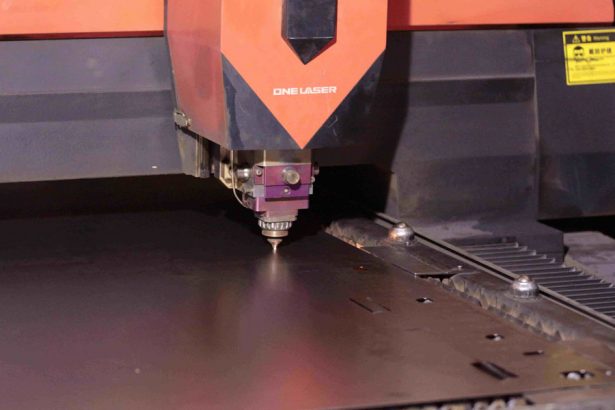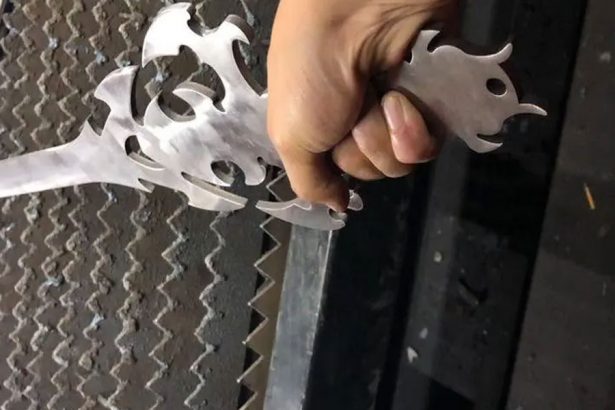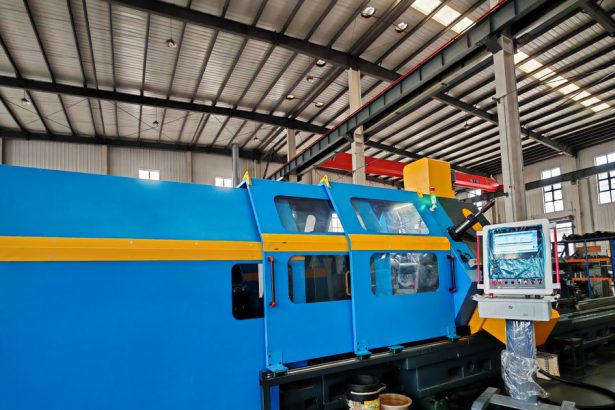Sheet metal bending is a fundamental manufacturing process used to deform metal sheets into desired shapes by applying force, typically through a punch and die setup. The process is critical in industries such as automotive, aerospace, construction, and electronics, where precise and reliable forming of components is essential. However, one of the primary challenges in sheet metal bending is managing instabilities, which can lead to defects such as wrinkling, springback, tearing, and buckling. These instabilities arise due to complex interactions between material properties, process parameters, and tooling configurations. Controlling these instabilities is crucial for ensuring product quality, minimizing material waste, and optimizing production efficiency.
This article provides a comprehensive examination of instability control in sheet metal bending, covering the underlying mechanisms, influencing factors, control strategies, and advanced techniques. By addressing both theoretical and practical aspects, it aims to serve as a definitive resource for researchers, engineers, and practitioners in the field of manufacturing. The discussion includes detailed comparisons of various methods and technologies, supported by tables to elucidate key differences and performance metrics.
Fundamentals of Sheet Metal Bending
Mechanics of Bending
Sheet metal bending involves subjecting a flat metal sheet to plastic deformation, typically around a straight axis, to achieve a permanent change in shape. The process induces a combination of tensile and compressive stresses across the sheet’s thickness. On the outer surface of the bend, the material experiences tensile stress, while the inner surface undergoes compressive stress. The neutral axis, located approximately at the midpoint of the sheet’s thickness, experiences minimal stress.
The bending process can be mathematically described using the bending moment, ( M ), which is related to the applied force and the geometry of the setup. The curvature of the bend is governed by the relationship:
[ \frac{1}{R} = \frac{M}{EI} ]
where ( R ) is the radius of curvature, ( E ) is the Young’s modulus of the material, and ( I ) is the moment of inertia of the sheet’s cross-section. This equation assumes elastic behavior, but in practice, plastic deformation dominates, requiring consideration of the material’s yield strength and strain-hardening characteristics.
Types of Bending Processes
Sheet metal bending encompasses various techniques, each with distinct characteristics and applications:
- V-Bending: The most common method, where a V-shaped punch forces the sheet into a matching die. It is widely used due to its simplicity and versatility.
- U-Bending: Similar to V-bending but produces a U-shaped cross-section, often used for channels and brackets.
- Wipe Bending: The sheet is bent by wiping it over a die edge, suitable for forming flanges.
- Roll Bending: The sheet is passed through rollers to achieve large-radius bends, commonly used for cylindrical or conical shapes.
- Air Bending: The punch does not fully contact the die, allowing for flexible bend angles with minimal tooling changes.
Each method is susceptible to specific instabilities, necessitating tailored control strategies.
Material Properties Influencing Bending
The behavior of sheet metal during bending is heavily influenced by its material properties, including:
- Yield Strength (( \sigma_y )): Determines the onset of plastic deformation. Higher yield strength materials are more resistant to bending but may exhibit greater springback.
- Tensile Strength (( \sigma_u )): Indicates the maximum stress the material can withstand before fracture, affecting the risk of tearing.
- Young’s Modulus (( E )): Governs elastic recovery, contributing to springback.
- Strain-Hardening Exponent (( n )): Describes the material’s ability to strengthen during plastic deformation, influencing formability.
- Anisotropy: Variations in mechanical properties along different directions, often pronounced in rolled sheets, affecting wrinkling and buckling tendencies.
Common materials for sheet metal bending include low-carbon steel, stainless steel, aluminum alloys, and titanium alloys, each presenting unique challenges in instability control.
Instabilities in Sheet Metal Bending
Instabilities in sheet metal bending manifest as defects that compromise the quality and functionality of the formed part. The primary instabilities are wrinkling, springback, tearing, and buckling, each driven by distinct mechanisms.
Wrinkling
Wrinkling occurs when compressive stresses in the sheet exceed the material’s buckling resistance, causing localized folding or rippling. It is most prevalent in regions subjected to in-plane compression, such as the flange or unsupported areas during bending. Wrinkling is influenced by:
- Sheet Thickness: Thinner sheets are more prone to wrinkling due to lower buckling resistance.
- Material Properties: Low yield strength and high anisotropy increase wrinkling susceptibility.
- Die Geometry: Large die radii or insufficient blank holding force exacerbate wrinkling.
- Process Parameters: High bending angles or excessive punch travel can induce compressive stresses.
Springback
Springback refers to the elastic recovery of the sheet after the bending force is removed, causing the final bend angle to deviate from the intended shape. It is a function of the material’s elastic modulus, yield strength, and the degree of plastic deformation. Springback is particularly pronounced in high-strength materials and small-radius bends. The springback angle, ( \Delta \theta ), can be approximated as:
[ \Delta \theta \approx \frac{3 \sigma_y R}{E t} ]
where ( t ) is the sheet thickness. Controlling springback is critical for achieving dimensional accuracy.
Tearing
Tearing occurs when tensile stresses exceed the material’s ultimate tensile strength, leading to fracture. It is common in sharp bends or when the bend radius is too small relative to the sheet thickness. The minimum bend radius, ( R_{\text{min}} ), is often expressed as a multiple of the sheet thickness:
[ R_{\text{min}} = k \cdot t ]
where ( k ) is a material-dependent constant (e.g., 0.5 for ductile materials like aluminum, 2 for less formable materials like high-strength steel).
Buckling
Buckling is a global instability where the sheet collapses under compressive loads, often in thin-walled sections or during deep bending. It is influenced by the sheet’s slenderness ratio and boundary conditions. Buckling is less common in typical bending operations but can occur in complex geometries or under improper tooling setups.
Factors Influencing Instabilities
Material Factors
The mechanical properties of the sheet metal play a pivotal role in instability occurrence. Table 1 compares the properties of common sheet metal materials and their impact on instabilities.
| Material | Yield Strength (MPa) | Tensile Strength (MPa) | Young’s Modulus (GPa) | Strain-Hardening Exponent | Anisotropy (R-value) | Wrinkling Susceptibility | Springback Tendency | Tearing Risk |
|---|---|---|---|---|---|---|---|---|
| Low-Carbon Steel | 200–300 | 300–450 | 200 | 0.20–0.25 | 1.4–1.8 | Moderate | Low | Low |
| Stainless Steel (304) | 250–400 | 600–800 | 190 | 0.15–0.20 | 0.9–1.2 | Low | High | Moderate |
| Aluminum (6061-T6) | 240–270 | 300–350 | 70 | 0.10–0.15 | 0.7–1.0 | High | Moderate | High |
| Titanium (Grade 2) | 350–450 | 400–550 | 110 | 0.10–0.15 | 1.0–1.5 | Moderate | High | High |
Table 1: Material Properties and Instability Tendencies
Tooling Factors
Tooling design significantly affects instability control. Key parameters include:
- Die Radius: Larger radii reduce stress concentrations, lowering tearing risk but potentially increasing wrinkling.
- Punch Radius: Similar to die radius, affects stress distribution and springback.
- Blank Holder Force (BHF): Controls material flow, preventing wrinkling but excessive force can cause tearing.
- Die Gap: The clearance between punch and die influences material flow and buckling risk.
Process Parameters
Process parameters such as bending speed, temperature, and lubrication also influence instabilities:
- Bending Speed: High speeds can induce dynamic effects, increasing wrinkling and tearing risks.
- Temperature: Elevated temperatures improve formability but may alter material properties, affecting springback.
- Lubrication: Reduces friction, minimizing tearing but potentially increasing wrinkling if not properly managed.
Strategies for Instability Control
Wrinkling Control
Wrinkling can be mitigated through several approaches:
- Blank Holder Force Optimization: Applying an appropriate BHF suppresses compressive instabilities. The optimal force depends on material properties and geometry, typically determined through finite element analysis (FEA) or empirical trials.
- Draw Beads: Small protrusions on the die surface increase tension in the sheet, reducing wrinkling. Draw beads are particularly effective in complex geometries.
- Multi-Point Control: Using segmented blank holders allows localized force application, adapting to varying stress distributions.
- Material Selection: Choosing materials with higher yield strength or lower anisotropy reduces wrinkling propensity.
Springback Compensation
Springback control involves compensating for elastic recovery through:
- Overbending: Intentionally bending the sheet beyond the desired angle to account for springback. The overbend angle is calculated based on material properties and bend geometry.
- Bottoming: Forcing the punch to fully contact the die, minimizing elastic recovery. This method increases tooling wear and requires precise control.
- Stretch Bending: Applying tensile forces during bending reduces springback by increasing plastic deformation.
- Tooling Design: Using specialized dies with springback compensation features, such as adjustable radii or counter-pressure mechanisms.
Tearing Prevention
Tearing is prevented by ensuring the bend radius and material properties are compatible:
- Minimum Bend Radius: Adhering to the material-specific minimum bend radius prevents excessive tensile stresses.
- Annealing: Heat treatment to improve ductility, particularly for high-strength materials.
- Multi-Stage Bending: Gradually forming the sheet in multiple steps to distribute strain and avoid localized stress concentrations.
- Lubrication: Applying appropriate lubricants reduces friction and stress concentrations at the bend.
Buckling Mitigation
Buckling is controlled through:
- Support Structures: Using additional supports or stiffeners in the tooling setup to enhance stability.
- Geometry Optimization: Designing parts with lower slenderness ratios to increase buckling resistance.
- Process Control: Maintaining consistent BHF and avoiding excessive compressive loads.
Advanced Techniques for Instability Control
Finite Element Analysis (FEA)
FEA is a powerful tool for predicting and controlling instabilities in sheet metal bending. By simulating the bending process, FEA can identify regions prone to wrinkling, springback, or tearing. Key inputs include material constitutive models (e.g., von Mises or Hill’s yield criteria), tooling geometry, and process parameters. FEA enables optimization of BHF, die design, and bending sequences, reducing trial-and-error in production.
Adaptive Control Systems
Adaptive control systems use real-time feedback to adjust process parameters during bending. Sensors monitor variables such as punch force, sheet displacement, and strain distribution, feeding data to a control algorithm that optimizes BHF or punch speed. These systems are particularly effective for high-precision applications or when processing materials with variable properties.
Servo-Driven Presses
Servo-driven presses offer precise control over punch motion, allowing for dynamic adjustments in speed and force. This flexibility enables multi-stage bending profiles that minimize instabilities. For example, a servo press can apply a high initial force to initiate plastic deformation, followed by a controlled reduction to prevent tearing.
Hot Forming
Hot forming involves bending the sheet at elevated temperatures to enhance formability and reduce springback. This technique is particularly effective for high-strength steels and titanium alloys. However, it requires careful control of temperature to avoid altering material microstructure or inducing thermal stresses.
Incremental Forming
Incremental forming involves deforming the sheet in small, localized increments, often using a CNC-controlled tool. This method reduces instabilities by distributing strain more uniformly, making it suitable for complex geometries or thin sheets prone to wrinkling.
Comparison of Instability Control Methods
Table 2 compares the effectiveness, cost, and applicability of various instability control methods.
| Method | Instability Addressed | Effectiveness | Cost | Applicability | Advantages | Limitations |
|---|---|---|---|---|---|---|
| Blank Holder Force | Wrinkling | High | Low | Broad | Simple, effective for most materials | Requires optimization, may cause tearing |
| Draw Beads | Wrinkling | High | Medium | Complex Parts | Effective for flanges, localized control | Increases tooling complexity |
| Overbending | Springback | Moderate | Low | Simple Bends | Cost-effective, easy to implement | Limited accuracy for complex geometries |
| Bottoming | Springback | High | Medium | Precision Parts | High accuracy | Increases tooling wear |
| Stretch Bending | Springback, Tearing | High | High | Large Parts | Reduces springback significantly | Complex setup, high equipment cost |
| FEA Simulation | All | Very High | High | All | Predictive, reduces trial-and-error | Requires expertise, computational cost |
| Adaptive Control Systems | All | Very High | High | Precision Parts | Real-time optimization | High initial investment |
| Servo-Driven Presses | All | High | High | Broad | Precise control, flexible | Expensive equipment |
| Hot Forming | Springback, Tearing | High | High | High-Strength Materials | Improves formability | Thermal control challenges |
| Incremental Forming | Wrinkling, Tearing | Moderate | Medium | Complex Parts | Flexible, reduces instabilities | Slower process, limited to small parts |
Table 2: Comparison of Instability Control Methods
Case Studies
Automotive Industry
In automotive manufacturing, sheet metal bending is used to form body panels, chassis components, and structural reinforcements. A common challenge is controlling springback in high-strength steel (HSS) used for lightweighting. A case study involving a door panel made from 980 MPa HSS demonstrated that combining FEA with servo-driven presses reduced springback by 60%. The process involved optimizing the punch trajectory to apply a variable force profile, ensuring uniform plastic deformation.
Aerospace Applications
Aerospace components, such as titanium wing skins, require precise bending with minimal wrinkling due to tight tolerances. A study on a titanium alloy (Ti-6Al-4V) wing skin showed that hot forming at 700°C, combined with adaptive BHF control, eliminated wrinkling and reduced springback to within 0.5°. The use of FEA to simulate thermal and mechanical interactions was critical to success.
Consumer Electronics
In consumer electronics, thin aluminum sheets (e.g., 0.5 mm thick) are bent to form device enclosures. Wrinkling is a significant concern due to the low thickness. A case study on a smartphone chassis demonstrated that incremental forming, coupled with multi-point blank holders, reduced wrinkling by 80% compared to traditional V-bending.
Future Trends in Instability Control
Machine Learning and AI
Machine learning (ML) and artificial intelligence (AI) are increasingly applied to instability control. ML models trained on bending data can predict optimal process parameters, reducing reliance on empirical trials. For example, neural networks have been used to optimize BHF in real-time, achieving a 30% reduction in wrinkling defects.
Industry 4.0 Integration
The integration of sheet metal bending into Industry 4.0 frameworks enables data-driven manufacturing. Internet of Things (IoT) sensors collect real-time data on process variables, feeding into digital twins that simulate and optimize the bending process. This approach enhances instability control by enabling predictive maintenance and process adjustments.
Advanced Materials
The development of advanced materials, such as ultra-high-strength steels (UHSS) and composites, poses new challenges for instability control. Research is ongoing to develop tailored bending processes, such as hybrid forming techniques that combine mechanical and electromagnetic forces to enhance formability.
Sustainability Considerations
Sustainability is a growing concern in manufacturing. Instability control contributes to sustainability by reducing material waste and energy consumption. Techniques like incremental forming and adaptive control minimize scrap rates, while hot forming can reduce the need for multiple forming stages, lowering energy use.
Conclusion
Instability control in sheet metal bending is a multifaceted challenge requiring a deep understanding of material behavior, tooling design, and process dynamics. By addressing wrinkling, springback, tearing, and buckling through a combination of traditional and advanced techniques, manufacturers can achieve high-quality components with minimal defects. The integration of computational tools like FEA, real-time control systems, and emerging technologies such as AI and Industry 4.0 promises to further enhance instability control. As materials and manufacturing requirements evolve, ongoing research and innovation will be essential to meet the demands of precision, efficiency, and sustainability in sheet metal bending.




